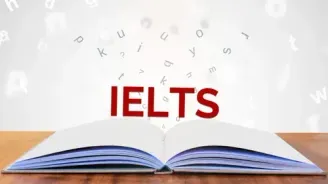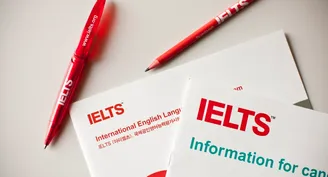Alexander Henderson Reading Answers Passage
Alexander Henderson Reading Answers Passage
Paragraph 1: Born in Scotland, Henderson emigrated to Canada in 1855 and became a popular landscape photographer. Alexander Henderson was born in Scotland in 1831 and is the son of a successful businessman. His grandfather, also known as Alexander, founded the family business and later became the first chairman of the National Bank of Scotland. The family-owned vast land in Scotland. In addition to its residence in Edinburgh, the Press Estate owned 650 acres of agricultural land about 35 miles southeast of the city. The family usually stayed at Press Castle, the large mansion on the northern edge of the property, and Alexander spent most of his childhood in the area, playing on the beach near Eyemouth or fishing in nearby streams.
Paragraph 2: After attending school at Murcheston Academy in the suburbs of Edinburgh, Henderson returned to print on weekends. In 1849, he started three years of training to become an accountant. Although he never wanted the opportunity of a business career, he was with it to make his family happy. However, in October 1855, he and his wife, Agnes Elder Robertson, emigrated to Canada, where they settled in Montreal.
Paragraph 3: Henderson studied photography in Montreal in 1857 and quickly took it up as an avid amateur. He turned into a personal friend and colleague of the Scottish-Canadian photographer William Notman. The two men made a photographic excursion to Niagara Falls in 1860 and, in 1865, collaborated on experiments with magnesium flares as a source of artificial light. They belonged to the same associations and were one of the founding partners of the Montreal Arts Association. Henderson presided over the first meeting of the Society on January 11, 1860, at Notman Studios.
Paragraph 4: Despite their friendship, their photography style is completely different. Although Notman’s landscapes are noted for their bold realism, Henderson created romantic images during the first 20 years of his career, which show a strong influence on the British landscape heritage. His artistic and technological advancement was quick and in 1865 he published his first large collection of landscape photographs. The publication was in low circulation and was called Canadian Views and Studies. The contents of each copy vary considerably and have proven to be an effective source for estimating Henderson’s early work.
Paragraph 5: In 1866, he abandoned his business to open a photo studio, promoting himself as a portrait and landscape photographer. From about 1870 he abandoned portraits to specialize in landscape photography and other scenes. His countless photographs of city life exposed in street scenes, houses, and markets are alive with human activities, and although his favored subject is landscape, he often draws his scenes around human motives such as farming the land and cutting ice on the river or travel on a forest stream. There was a lot of demand for these types of scenes and other scenes depicting the timber trade, steamboats, and waterfalls. Before the late 1880s, there was little competitive entertainment or amateur photography because of the weight of time-consuming methods and equipment involved. People liked to purchase photos as souvenirs or gifts for a trip, and in order to feed this market, Henderson kept stock photos in his studio for mounting, framing, or adding to albums.
Paragraph 6: Henderson exhibited his photographs frequently in Montreal and abroad, in London, Edinburgh, Dublin, Paris, New York, and Philadelphia. He was most successful in New York in 1877 and 1878 when he won first prizes at an exhibition hosted by E and H T Anthony & Company for landscapes using the Lambertype process. His work won second prize at the 1878 World’s Fair in Paris.
Paragraph 7: During the 1890s and 1880s, Henderson journeyed extensively throughout Quebec and Ontario, Canada, documenting the main cities of the two regions and several villages in Quebec. He was particularly fond of nature and often travelled by canoe on the Blanche, du Livre, and other mentioned eastern rivers. He travelled several times to the Maritimes, sailing in 1872 on the north bank of the St. Lawrence River. That same year, while in the lower reaches of the St. Lawrence River, he took some photographs of the construction of the Colonial Railway. This initiative led the Railway Authority to register major structures on the nearly completed track connecting Montreal with Halifax in 1875. Commissions were followed by other railways. In 1876, he photographed bridges in Quebec, Montreal, and Ottawa, and the Occidental Railway between Montreal and Ottawa. In 1885, he sailed west along Rogers Pass in British Columbia via the Canadian Pacific Railway (CPR), where he captured photographs of the mountains and the advancement of construction.
Paragraph 8: In 1892, Henderson took a full-time position with CPR as manager of a photography department, which he was to set up and manage. His responsibilities include spending four months in the field each year. That summer, he made his second voyage west, taking a detailed photo of the railroad up to Victoria. He continued in this position until 1897 when he fully retired from photography. He restarted in this position until 1897, when he fully retired from photography.
Paragraph 9: When Henderson died in 1913, his large glass negative collection was kept in the basement of his home. Today, collections of his works are housed in the National Archives of Canada and the McCart Museum of Canadian History in Ottawa and Montreal.
Alexander Henderson Reading Answers with Sample Questions
Discover exciting and informative IELTS reading answers about Alexander Henderson Reading Answers with Sample Questions.
Check Out 10 IELTS Reading Practice Test Questions with Answers
Below are some top free IELTS reading Practice test online questions with detailed answers to enhance your IELTS preparation online. We have provided sample passages for each test type for your reference.
- Raising The Mary Rose Reading Answers
- Climate Change And The Inuit Reading Answers
- The Benefits Of Being Bilingual Reading Answers
- Urban Farming Reading Answers
- Secrets Of The Swarm Reading Answers
- Spoken Corpus Comes To Life Reading Answers
- Emergency Procedures Reading Answers
- Is Anybody Out There Reading Answers
- Pine Trees Reading Answers
- Play Is A Serious Business Reading Answers
- A Song On The Brain Reading Answers
- The Megafires Of California Reading Answers
- The Story Of Silk Reading Answers
- The Effects Of Noise Reading Answers







